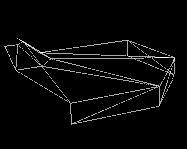Is anything impossible?
-
Been some pretty cool and complex stuff being modeled on the site lately. I was wondering if anyone could think of anything that would be considered impossible to model in SU?
-
Sounds like we got a new challenge thread.

How about a person's face? John Cleese?
-
Cigarette smoke or smells of French cooking?

-
Adam, looks like you want a 'Chaotic-crazy-organic' challenge right?
-
I'm up for anything. I like the idea of collective problem solving using our combined Super SU reasoning and a satchel full of shiny new plugins.
Pete, ever consider a Process This (Post work challenge)? That should yield some interesting results....
-
@earthmover said:
I'm up for anything. I like the idea of collective problem solving using our combined Super SU reasoning and a satchel full of shiny new plugins.
Pete, ever consider a Process This (Post work challenge)? That should yield some interesting results....
How about something like a stone wall or column that looks real when you come to the corners? That would be organic.
Or something that would show lacing pictures for textures together to form a complete rounded object.
An Oak tree would be cool also. Full grown 100 year old oak that is!

-
I tihnk a lot of the stuff here: http://www.pixologic.com/zbrush/gallery/ could be considered impossible in SU, or at least take an unreasonably long time to do.
-
I wish Sketchup was more complete as an architectural modeler.
For one, I miss to be able to model stuff like this:
Not that I need that in my daily work, but just being able to do it when it is needed, would be swell.
Curvy stuff is possible with a lot of patience and a lot of tricks, but in sketchup it remains quite a 'destructive' modeling process.
Once the shape is created, alterations become more difficult, and keeping a clean mesh even more. -
I guess, this would be quite a challenge in many other programs, too - but certainly easier in some than in SU.
You are perfectly right however that having achieved anything close to this in SU will never really let you edit the result.
-
What about parametric patch modelling in SU?

-
Ah yes, and texturing and distorted UVMapping (don't say there is Whaat's plugin because all the job is done in external apps now, with UV Tools 2)

-
i think it's possible to get things to look similar to other things but once you get into the true measurements and shapes, everything is screwed up and there's really no way to draw certain shapes accurately.. kwisten's picture is one example.. i'm sure i could make something look similar but if i tried to build it, many of the surfaces would be kinked etc..
an example of something i've tried for years to do accurately in SU is :
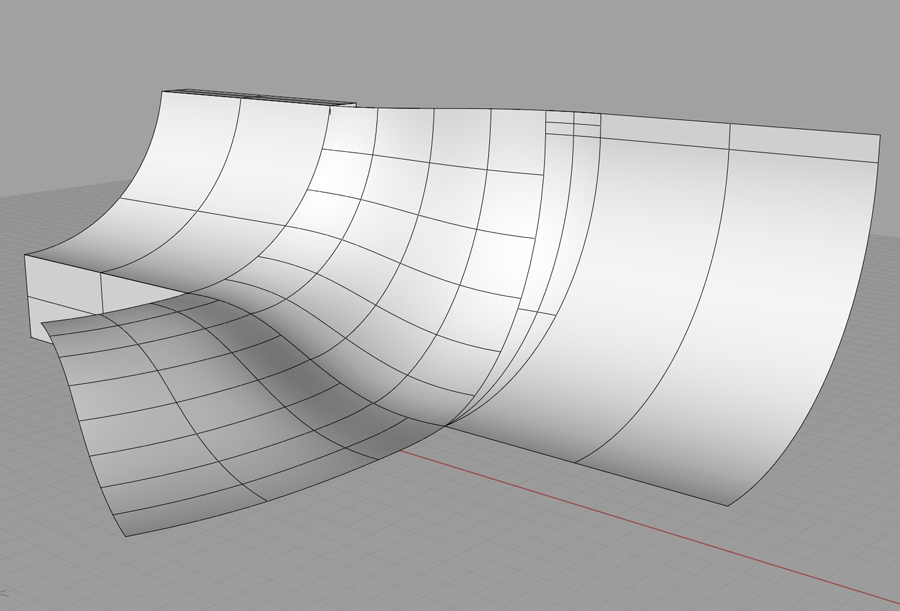
i recently gave up trying and realized i need to learn a new app.. i drew that very quickly and accurately using rhino and i can still go back and edit the surfaces once they're formed (changing the continuity of the blends etc)..
so yeah, i'd say SU can be used for highly accurate drawings up to a certain point but then it falls flat on it's face.. the flipside is that for the things SU is best at, it can't really be beat in terms of speed & freedom..
-
Jeff, that screenshot, that's what I have in mind with Patch modelling in SU. After making that Teapot plugin, which consisted of Bezier Patches - I have been toying with the idea of making a tool to make parametric patches in SU.
There are two ways around this I see it working:
Like 3DSMax' Patch tool - you have 4 vertices and control handles attached to each vertex. (there are 4 points then which I then have to interpolate)
Or, having direct control to each 16 control points. -
@thomthom said:
Jeff, that screenshot, that's what I have in mind with Patch modelling in SU. After making that Teapot plugin, which consisted of Bezier Patches - I have been toying with the idea of making a tool to make parametric patches in SU.
the problem (or challenge) i see with creating a simple patch tool is that it would work like soap skin & bubble in that it's only thinking of the patch itself and it's outer edges while ignoring the mating surfaces.. that's the trick, getting the mating surfaces and the patch to blend smoothly..
here's a surface analysis of the picture i posted above. all of the surfaces and their shapes are considered instead of rhino simply trying to fill in a hole.

-
"mating surfaces"?
-
@thomthom said:
"mating surfaces"?
ha, yeah, i was hoping that was understandable

basically, taking the picture i posted, the mating surfaces(?) are doing 3 different things..
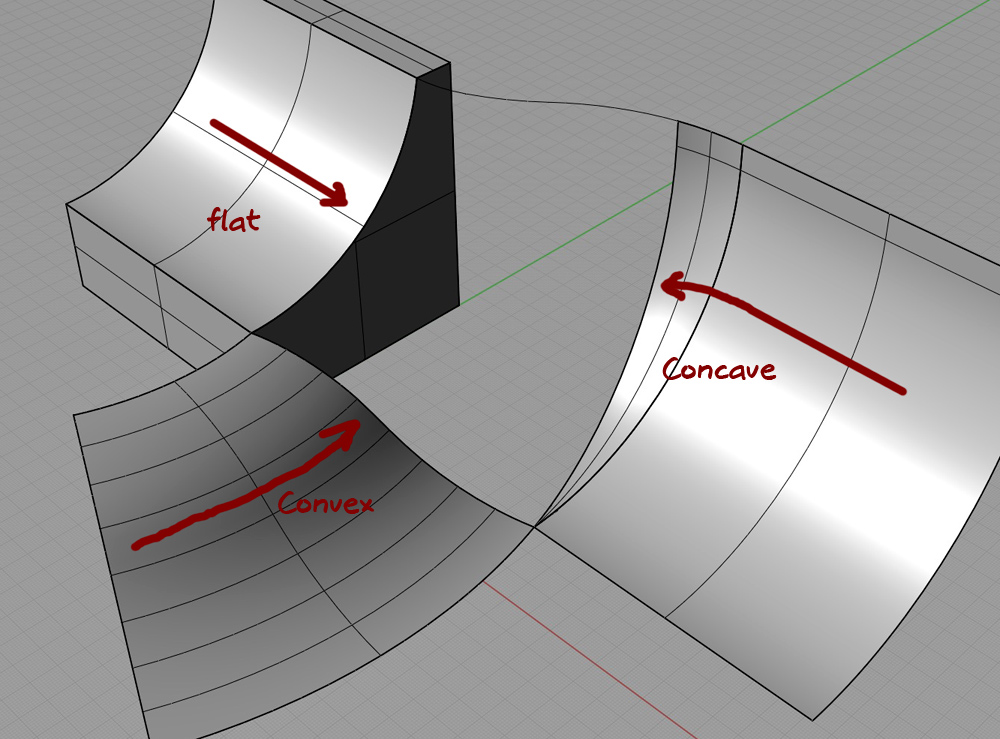
i think it would be very hard (impossible?) for SU to analyze the surfaces in that shot and ensure the resulting patch blends properly.. i think it would create a bunch of kinks instead of one smooth continuous surface.
-
for example, i think this would happen with a sketchup patch tool:
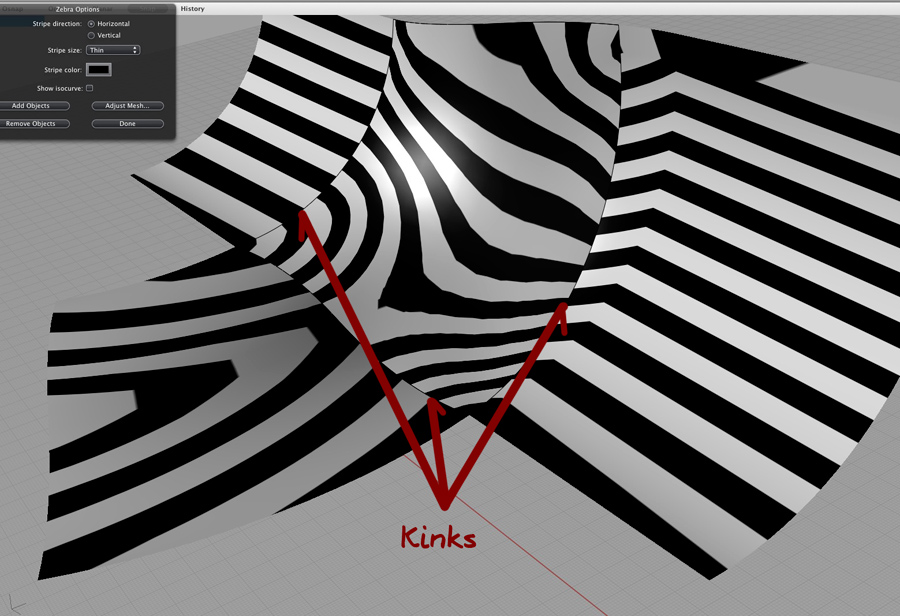
for that, i only used the edges to make a patch instead of considering the adjoining surfaces.. while it will fill the hole and possibly even look OK on the computer, it's unusable for real world applications.
for comparison, the smooth one again:
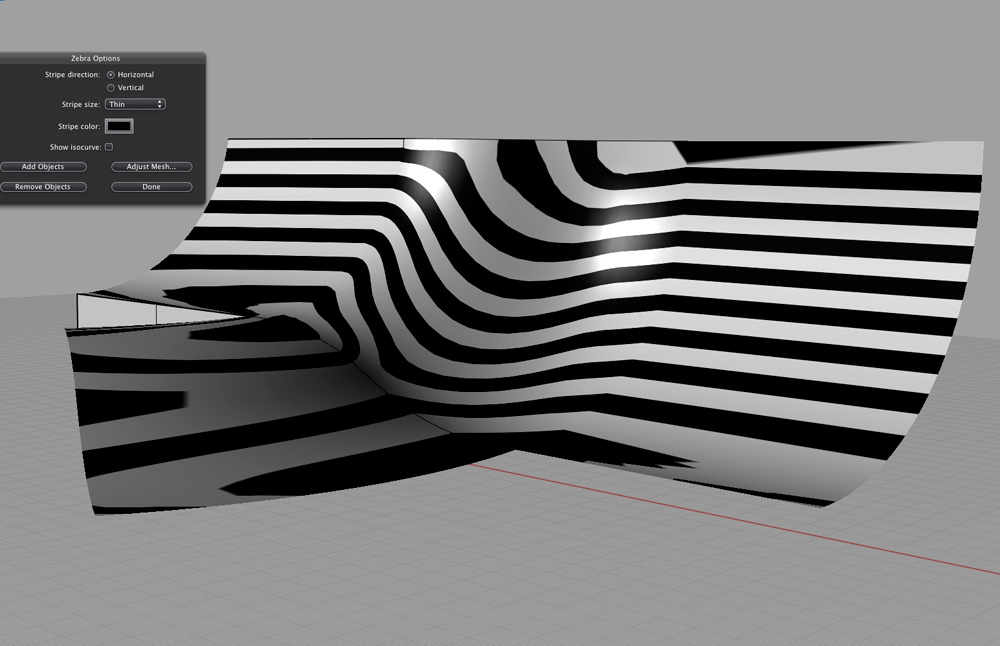
-
So you're talking about kinks in UV mapping - not the geometry?
-
no, the geometry.. those zebra stripes are just a rhino feature for analyzing smoothness & nothing to do with texture mapping.. i guess it's hard to describe how to view it unless you've tried it yourself..
it's basically telling you that if you were to run your hand over some of the blends (in the bad version) that you would feel a noticeable valley near the concave blend and a peak at flat blend.. a bit of both on the convex blend..
the valley created by the concave blend is very bad.. here's a shot looking down at the structure from above/behind.. you'll see the patch comes in at a hard angle an creates a very noticeable valley instead of a smooth continuous surface.
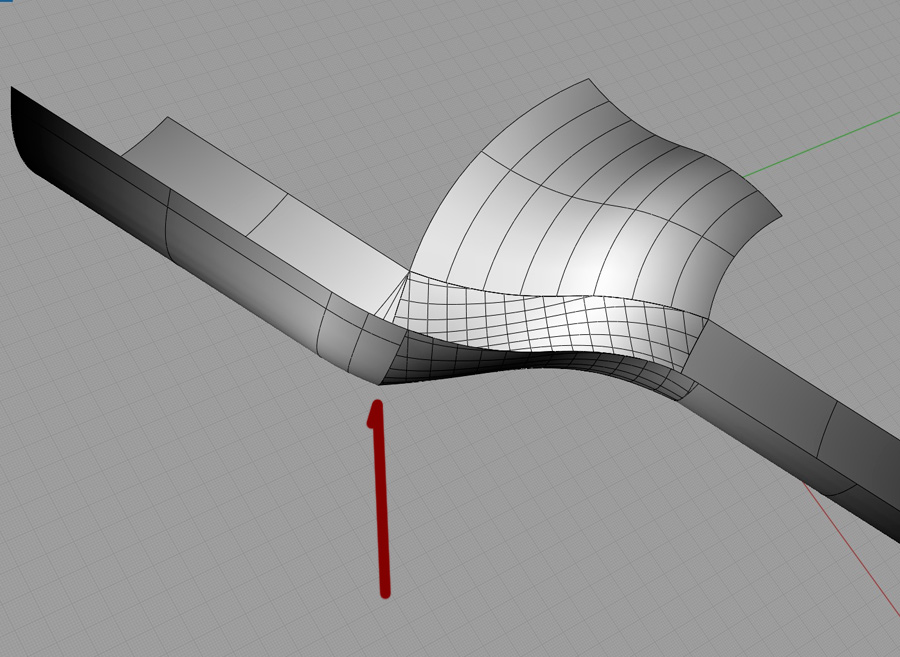
-
It should be possible to make transitions between patches smooth.
Advertisement
